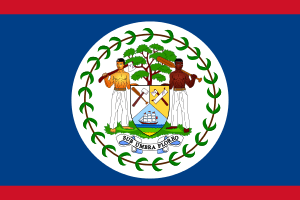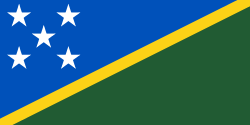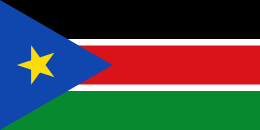Convention for the Suppression of Unlawful Acts against the Safety of Maritime Navigation
| Type | Admiralty law, International criminal law, anti-terrorism |
|---|---|
| Signed | 10 March 1988 |
| Location | Rome, Italy |
| Effective | 1 March 1992 |
| Condition | 15 ratifications |
| Parties | 166 |
| Depositary | Secretary-General of the International Maritime Organization |
| Languages | Arabic, English, French, Russian, and Spanish |
The Convention for the Suppression of Unlawful Acts against the Safety of Maritime Navigation (SUA) or Sua Act is a multilateral treaty by which states agree to prohibit and punish behaviour which may threaten the safety of maritime navigation.
Content
The Convention is based upon the 1971 Convention for the Suppression of Unlawful Acts Against the Safety of Civil Aviation and the Convention for the Suppression of Unlawful Seizure of Aircraft and criminalises similar behaviour in the context of maritime navigation.
The Convention criminalises the following behaviour:
- Seizing control of a ship by force or threat of force;
- committing an act of violence against a person on ship if it is likely to endanger the safety of the ship;
- destroying or damaging a ship or its cargo in such a way that endangers the safe navigation of the ship;
- placing or causing to be placed on a ship a device or substance which is likely to destroy or cause damage to the ship or its cargo;
- destroying or damaging a ship's navigation facilities or interfering with their operation if it is likely to endanger the safety of the ship;
- communicating information which is known to be false, thereby endangering the safety of the navigation of a ship;
- injuring or killing anyone while committing 1–6;
- attempting any of 1–7;
- being an accomplice to any of 1–8; and
- compelling another through threats to commit any of 1–9.
The Convention sets out the principle of aut dedere aut judicare—that a state party to the treaty must either (1) prosecute a person who commits one of the offences or (2) send the individual to another state that requests his or her extradition for prosecution of the same crime.
The Convention does not apply to:
- A warship; or
- a ship owned or operated by a State when being used as a naval auxiliary or for customs or police purposes; or
- a ship which has been withdrawn from navigation or laid up.
Nothing in the convention affects the immunities of warships and other government ships operated for non-commercial purposes.
Creation and entry into force
The Convention was adopted by the International Conference on the Suppression of Unlawful Acts against the Safety of Maritime Navigation at Rome on 10 March 1988. It came into force on 1 March 1992 after it had been ratified by 15 states.
State parties
As of June 2015, the Convention has 166 state parties, which includes 164 UN member states plus the Cook Islands and Niue. The 166 states represent 94.5 per cent of the gross tonnage of the world's merchant fleet.
The following are the 29 UN member states that are not party to the Convention. An asterisk beside the state indicates that the state is not a landlocked country and thus has maritime coastline.
 Angola*
Angola* Belize*
Belize* Bhutan
Bhutan Burundi
Burundi Cameroon*
Cameroon* Central African Republic
Central African Republic Chad
Chad Colombia*
Colombia* Democratic Republic of the Congo*
Democratic Republic of the Congo* East Timor*
East Timor* Eritrea*
Eritrea* Gabon*
Gabon* Haiti*
Haiti* Indonesia*
Indonesia* Kyrgyzstan
Kyrgyzstan Malaysia*
Malaysia* Nepal
Nepal North Korea*
North Korea* Papua New Guinea*
Papua New Guinea* Rwanda
Rwanda Sierra Leone*
Sierra Leone* Solomon Islands*
Solomon Islands* Somalia*
Somalia* South Sudan
South Sudan Suriname*
Suriname* Thailand*
Thailand* Venezuela*
Venezuela* Zambia
Zambia Zimbabwe
Zimbabwe
None of the 29 non-member states has signed SUA.
SUA Protocol
The Protocol for the Suppression of Unlawful Acts against the Safety of Fixed Platforms Located on the Continental Shelf (SUA PROT) was concluded at the same time as SUA. The Protocol came into force at the same time as SUA. SUA PROT is a supplementary convention to SUA.
2005 Protocol
In London on 14 October 2005, a second supplementary Protocol to SUA was concluded. The full name of the Protocol is the Protocol of 2005 to the Convention for the Suppression of Unlawful Acts against the Safety of Maritime Navigation and is often abbreviated as "SUA 2005". The 2005 Protocol adds provisions which criminalises the use of ships to transfer or discharge biological, chemical, or nuclear weapons. (However, the Protocol specifies that transporting nuclear materials is not an offence if it is transported to or from the territory or under the control of a state party to the Treaty on the Non-Proliferation of Nuclear Weapons.) It also prohibits ships from discharging oil, liquefied natural gas, radioactive materials, or other hazardous or noxious substances in quantities or concentrations that are likely to cause death or serious injury or damage. Finally, it prohibits the use of such weapons or substances against ships involved in maritime navigation.
The 2005 Protocol came into force on 28 July 2010 and as of February 2016 has been ratified by 40 states.